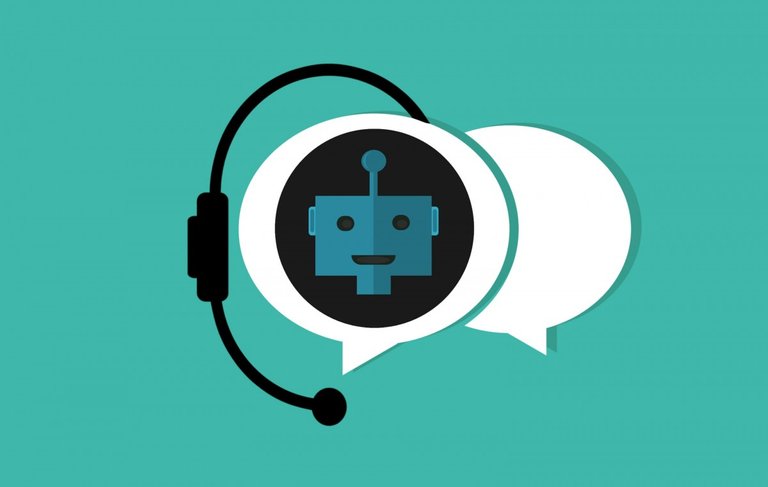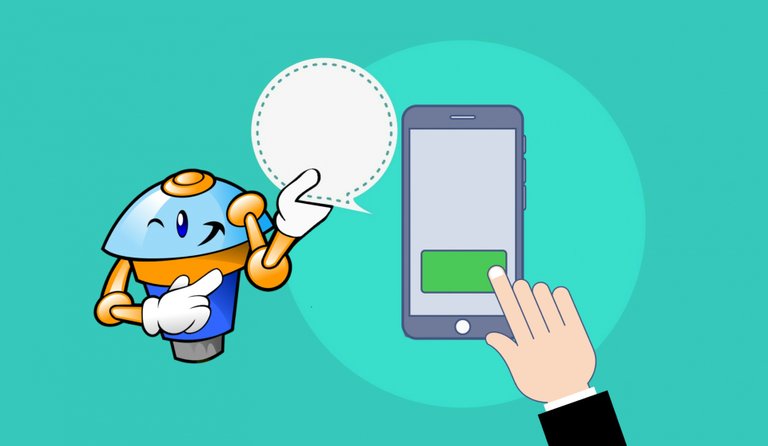One of the greatest technological inventions in history has to be artificial intelligence. The cutting-edge innovation is widely applied in several industrial sectors across the globe. From software applications to smart devices and hardware, Artificial Intelligence is evident in practically every activity of life. Among a plethora of ways in which Artificial Intelligence is being used to scale up effectiveness is the very popular chatbot. Chances are you have interacted with a chatbot a few minutes before you started reading this article.
A few days ago, I had issues with my order on Amazon and had no choice but to contact their customer care support on the platform. I was forced to interact with a chatbot for a while and not until it is obvious that the chatbot could not proffer solutions to my problems that I was transferred to a real human. Many problems get solved without getting to this stage, saving a lot of resources in the process.

Chatbots, also called chatterbots or conversational agents, are a form of Artificial Intelligence widely implemented in messaging apps. They are popular software applications designed to imitate written words or human speech to conduct an online conversation with a real person. They are used by practically every modern business to give a good customer experience and save costs, time, and other forms of resources. Consider chatbots as virtual assistants powered by artificial intelligence using natural language to understand what an individual wants when they visit a website or start up a software application. Virtually every customer support live chat service you have used has a chatbot representing a person behind it.
Over the years, chatbot technology has interestingly grown in popularity. It is an innovation that will only get better with each technological advancement. The chatbots we see today and chat with are undeniably smarter, very responsive, and generally useful. Especially in the customer service space, they are commonly used to aid productivity and effectiveness in the workspace. Most of the time, they give accurate responses in real-time that have a striking resemblance with one that would come from an actual person. Technology has yet again proven to be worth its weight in gold.
The Technology
Chatbots typically capitalize on artificial intelligence, language processing, and advancements in machine learning. Chatbot technology revolves around natural language processing (NLP). It is the same technology that supports voice recognition systems used by common virtual assistants such as Apple's Siri, Cortana of Microsoft, and Google Now. The aforementioned are typical examples of the chatbots we have seen evolve in recent years. The technology behind how chatbots work helps them function in a relatively simple way.
There is a process called parsing which involves chatbots processing the text they receive from the user's end right before they respond to it according to a detailed progression of algorithms that identifies and interprets whatever message the user is trying to pass across. The technology deduces what they mean and returns a series of the right responses to the user based on the information received.
An interesting aspect of chatbot technology is how remarkably it delivers. While some chatbots easily put it out there that they are bots, others are uniquely designed to function and converse like real humans and it is almost impossible to tell that they do not breathe. Although there are certain limitations surrounding chatbot technology including its reliance on the ability of an algorithm to interpret human data, the adoption of chatbots is increasing at an interesting pace.
Types of Chatbots
At the highest level, there are three generally known and widely used types of chatbots today:
Rules-based Bots
As the name implies, this type of chatbot is built and designed to specifically follow a series of pre-designed rules to achieve its objectives. They are also called decision tree bots and they work around these rules often built by the bot developer using a graphical user interface to design paths using a decision tree. The rules are the basis for the types of tasks the chatbot is accustomed to and can easily handle and deliver solutions for. These rule-based chatbots plan the details of a conversation. In other words, they program the conversion in anticipation of what a user is likely to ask and how the responses should go.
AI Chatbots
Depending primarily on the technology behind artificial intelligence, AI chatbots will automatically get accustomed to the work routine after a hot developer has given the necessary training for a period of time. These types of chatbots use machine learning which helps them understand the context and purpose of a conversation before getting on with it. They have the ability to produce their answers to tricky questions with natural language responses. They only get better with each training and operate seamlessly with the user.
Live Chat Bots
One might easily consider live chatbots the most common type of chatbots in the virtual assistant's space. These bots are majorly used by companies especially in the sales or customer care support team. Live chat is an effective way to chat with users and answer questions in real-time. Live chatbots work the same way live agents would in a live chat. They communicate appropriately, sending the right message and chatting seamlessly.
Most individuals might consider chatbots a type of technology with negligible importance but nothing can be further from the truth. Let's consider the benefits of chatbot technology in order to see its importance clearly. Now, top brands and forward-thinking companies are rapidly adopting chatbot technology to help scale their businesses as well as improve the productivity of their marketing and sales teams.
Consumer expectations are ever-increasing. Today, we expect immediate responses to every inquiry made. We also expect that they are prompt, precise, and accurate. While there are trained experts and customer support professionals, there is an extent to which they can deliver. Unlike humans, chatbots promise an around-the-clock service. Technology has proposed ease and convenience in everything we do and chatbots are yet another example.

Chatbots are inventions focused primarily on improving the consumer experience, hence, it is seeing a good adoption rate from organizations, both corporate and individual. They do not only help increase web conversion rate, but they also help more liquefied leads by talking to every new prospect in real-time and help to answer a high volume of support inquiries that would normally be a tall order for even the most active professional.
Even if some individuals perceive technology as a fad, chatbots are a technological advancement that will revolutionize and reshape the way individuals communicate and interact. The importance and impact of chatbots on online customer experiences deserve the hype surrounding it.
Thanks for your contribution to the STEMsocial community. Feel free to join us on discord to get to know the rest of us!
Please consider supporting our funding proposal, approving our witness (@stem.witness) or delegating to the @stemsocial account (for some ROI).
Please consider using the STEMsocial app
app and including @stemsocial as a beneficiary to get a stronger support.